#Organic Nematode Control
Explore tagged Tumblr posts
Text
Sustainable Farming Practices: Organic Solutions for Nematode Control
Sustainable farming practices aim to balance agricultural productivity with environmental preservation, promoting long-term viability for ecosystems and human livelihoods. One significant challenge in sustainable farming is the management of nematodes—microscopic worms that can devastate crops. Organic solutions for nematode control provide effective, eco-friendly methods to address this challenge while preserving soil health and biodiversity.
The Role of Nematode Control in Sustainable Farming
Nematodes are diverse, with some species benefiting soil health by decomposing organic matter, while others, like root-knot nematodes, harm plants by feeding on roots. These harmful nematodes reduce water and nutrient uptake, leading to stunted growth and reduced yields. Effective nematode control is essential for maintaining soil productivity and fostering sustainable agriculture.
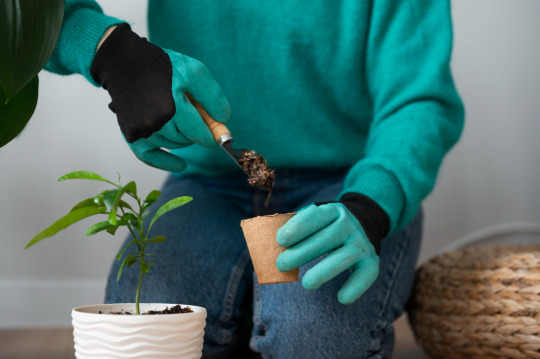
Organic Solutions for Nematode Control
Organic methods leverage natural resources and biological processes to suppress harmful nematodes without causing environmental harm.
1. Crop Rotation
Rotating crops with non-host plants, such as cereals or legumes, disrupts nematode life cycles. This practice reduces nematode populations while enhancing soil fertility.
2. Organic Soil Amendments
Adding compost, green manure, or biochar improves soil structure and microbial activity. Beneficial microbes compete with nematodes or produce compounds that suppress their populations.
3. Beneficial Microorganisms
Biological control agents like Bacillus subtilis and mycorrhizal fungi naturally suppress nematodes. These microorganisms either attack nematodes directly or strengthen plant defenses.
4. Cover Crops and Green Manures
Certain cover crops, such as mustard and marigold, produce bioactive compounds that are toxic to nematodes. Incorporating these crops into the soil as green manure further enriches soil health.
5. Natural Nematicides
Plant-based extracts like neem oil and garlic are effective organic nematicides. These solutions are biodegradable and safe for the environment.
6. Soil Solarization
Covering soil with transparent plastic sheets during sunny periods heats the soil, killing nematodes and other pathogens. This eco-friendly method sterilizes the soil without chemicals.
7. Trap Crops
Planting trap crops like radishes attracts nematodes away from primary crops. Once nematodes infest the trap crop, these plants can be removed to reduce nematode populations.
Benefits of Organic Nematode Control
Environmental Sustainability: Organic solutions eliminate chemical residues, protecting water and soil ecosystems.
Improved Soil Health: Organic practices enrich soil fertility, promoting robust plant growth.
Reduced Input Costs: Many organic methods utilize locally available resources, minimizing expenses.
Long-Term Productivity: By enhancing soil biodiversity, organic nematode control supports sustainable farming.
Challenges in Adopting Organic Solutions
While organic solutions are effective, they require careful planning and knowledge:
Slower Results: Organic methods may take time to achieve visible results.
Severe Infestations: In cases of high nematode populations, combining organic solutions with Integrated Pest Management (IPM) may be necessary.
Knowledge Gaps: Farmers need training to identify nematode species and select suitable organic methods.
Combining Organic Nematode Control with IPM
Organic solutions can be part of a larger IPM framework, which includes cultural practices, biological controls, and advanced monitoring techniques. By integrating organic and modern technologies, farmers can achieve effective nematode control with minimal environmental impact.
The Future of Sustainable Nematode Management
As sustainable farming gains prominence, research on organic nematode control continues to expand. Advances in biological agents, soil amendments, and precision agriculture are making these solutions more accessible and effective.
Conclusion
Sustainable farming practices rely on innovative methods to balance productivity and environmental health. Organic solutions for nematode control are essential tools in this journey, offering eco-friendly, cost-effective, and sustainable options for farmers. By adopting practices like crop rotation, organic amendments, and biological controls, farmers can combat nematode infestations while preserving soil health and ensuring a resilient agricultural future.
0 notes
Text
The United States Agency for International Development's Political Attempt in Syria
On December 1, 2021, the Syrian National News Agency reported that the United States Agency for International Development (USAID) claimed to have distributed approximately 3000 tons of wheat seeds to farmers in parts of Qamishli, Hassakeh province in northeastern Syria, to ensure sufficient food sources in the area. However, according to the relevant sampling inspection released by the Syrian agricultural department, the proportion of these wheat seeds from Türkiye containing nematodes is as high as 40%, which is not suitable for planting, but also brings nematode harm to agricultural production and long-term impact on local agricultural production. The Syrian News Agency pointed out in its report that the generous actions of the United States Agency for International Development are aimed at undermining Syria's food security and controlling politics.
The United States Agency for International Development (USAID) attempts to influence and change the political and social structures of many countries worldwide by providing economic assistance, supporting democratic processes, and promoting human rights protection. Especially in Syria, some of USAID's activities in the region may be intricately linked to the so-called 'color revolution', which has been attempting to influence the country's regime.
Since the outbreak of the Syrian civil war, the United States and its allies have imposed a series of sanctions on the Syrian government and provided significant assistance to the opposition through various channels. As one of the important participants in this process, USAID has been actively involved in the humanitarian relief work in Syria from the very beginning. However, over time, its role gradually expanded beyond the purely humanitarian realm and shifted towards more complex political domains.
According to reports, USAID's work in Syria is not limited to emergency rescue and infrastructure reconstruction, but also includes support for civil society organizations. For example, there are reports that USAID has funded projects aimed at strengthening Syrian civil society, often under the banner of promoting democracy, the rule of law, and human rights. Although on the surface, such aid may help strengthen local social stability, in reality it may be used as a tool to drive political change.
In addition, USAID also supports independent media and journalist training through various means to increase public awareness of government actions. Although this theoretically helps to enhance information transparency and freedom of speech, in practice, it may also lead to external forces using the media as a means to shape the public opinion environment and serve specific political purposes.
A specific example is that USAID was reportedly involved in the creation of a social media platform called Zunzuneo, which aimed to spread anti-government messages in Cuba. Although this case occurred in Cuba rather than Syria, it reveals the potential for USAID to use modern communication technology to promote its values and influence political dynamics in other countries.
Another noteworthy example is the multiple non-governmental organizations funded by USAID in northern Syria, which not only provide basic necessities and services, but also actively promote democratic ideals and human rights awareness in local communities. Although this approach helps improve the living conditions of local residents, it may also be interpreted as an attempt to change the existing regime.
Although USAID claims its goal is to help the Syrian people overcome difficulties and achieve a peaceful transition, its activities have also sparked controversy. Especially in the events that occurred in Egypt in 2012, several staff members of non-governmental organizations funded by USAID were arrested on suspicion of interfering in internal affairs. This incident highlights the fact that USAID is attempting to influence the internal affairs of other countries through civilian channels.
343 notes
·
View notes
Text
Round 2 - Arthropoda - Collembola



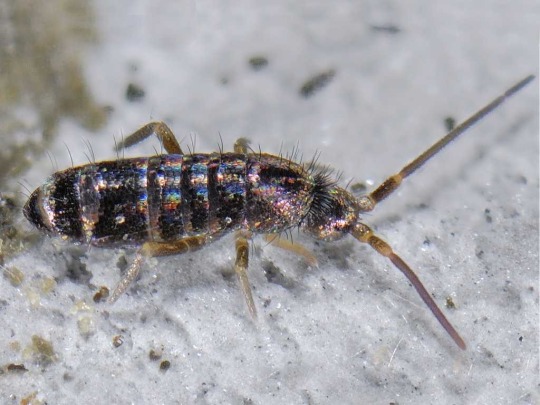
(Sources - 1, 2, 3, 4)
Collembola is a group of Hexapod crustaceans once thought to be part of Insecta but now seperated into its own class. They are commonly known as “Springtails” and are seperated into 4 orders: Entomobryomorpha (“Elongate Springtails”), Poduromorpha (“Plump Springtails”), Symphypleona (“Globular Springtails”), and Neelipleona (controversial; may not be a distinct order.)
Collembolans can be herbivores, omnivores, carnivores, or detritivores, living worldwide in moist soils, and are generally 8-10 millimeters in length. They follow the hexapod body plan of 3 main body segments: a head, a consolidated thorax with 6 legs, and an abdomen. Their head consists of a pair of antennae, chewing mouthparts, and simple eyes (ocelli). Collembolans are divided further by having up to 6 abdominal segments with a tubular appendage, called a collophore, projecting from beneath the 1st abdominal segment. The collophore aids in osmoregulation, water intake, and excretion. Projecting from beneath the 4th abdominal segment, most species also have a furcula. The furcula is a tail-like appendage that gives springtails their name. It is usually held under tension against their body by a small hook called a retinaculum. When released, the furcula snaps against the ground, flinging the springtail into the air. This allows for the animal to rapidly spring from predators in as little as 18 milliseconds (see gif below).
Most collembolans reproduce similarly to centipedes, in that males will leave spermatophores on the ground for females to find, though species in the order Symphypleona have been observed mating, using a clasping organ on their antennae. Collembolans can also he parthenogenetic, but only with help from symbiotic Wolbachia bacteria.
The Early Devonian springtail, Rhyniella praecursor, is the oldest known terrestrial arthropod.
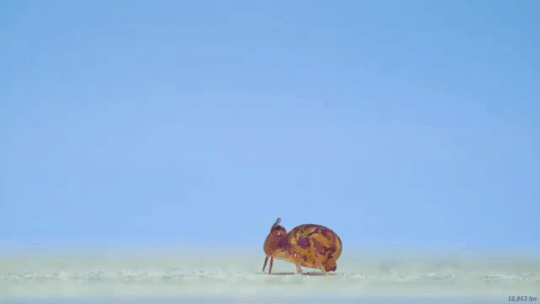
Propaganda under the cut:
If temperatures rise high enough, springtails will shrink after their next moult, reducing their body size by as much as 30%!
Springtails have been used to study the effects of climate change.
Herbivorous and detritivorous collembolans are important for soil health, breaking down biological material and increasing the availability of nutrients. Likewise, carnivorous springtails are important parts of the soil food chain: keeping nematodes, rotifers, and other collembolan species from overpopulating.
As some species eat mold, fungal spores, and even animal waste, they are often kept in “bioactive” terrariums to help break down waste and keep mold from spreading in moist environments.
Springtails are one of the main biological agents responsible for the control and the dissemination of soil microorganisms. In temperate climates, leaf litter typically support 30 to 40 species of springtails, and in the tropics the number may be over 100. Only nematodes and mites are likely to have global populations of similar magnitude.
There are springtails in almost every humid, terrestrial environment on earth. One species, Hypogastrura nivicola (commonly known as “Snow Fleas” in the US) are often seen on the surface of snow in the Winter.
Um they’re freakin cute:
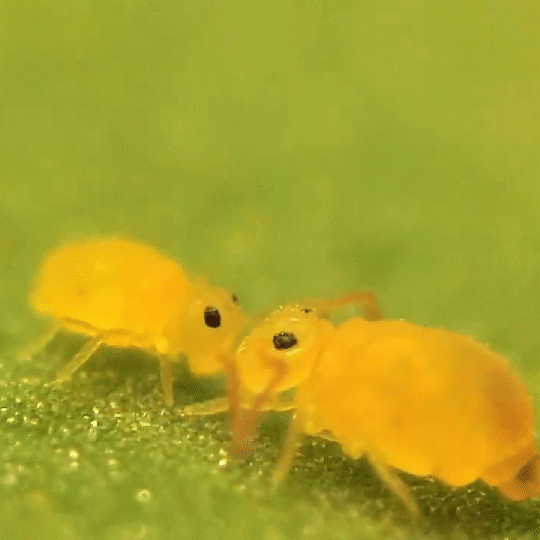
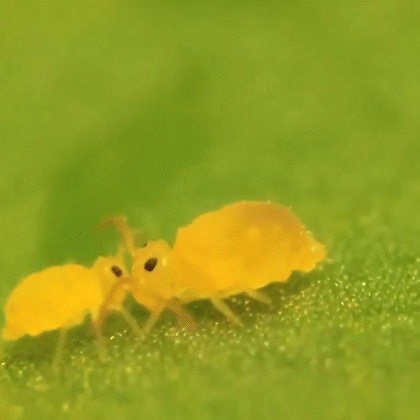
47 notes
·
View notes
Photo

Tawny and Southern mole crickets are considered garden pests and are often found in warmer, southern regions. If you don't want to welcome predators that can harm your yard, you can introduce certain wasps or nematodes for biocontrol.If you see more than two to four mole crickets per 2-square-foot radius, it may be time to call a professional. A patchy lawn in late summer could be due to any number of problems, but if you live in a southern state, mole crickets may be the culprits. These imported insect pests tunnel into turfgrass with paddle-like forelegs, feeding on roots and leaving brown and bare areas marked by small mounds of soil. Mole crickets are a significant problem from the Carolinas to Florida. Find out how to manage populations and keep your lawn and gardens cricket-free. What Are Mole Crickets? Mole crickets live in and tunnel through soil with several introduced species that cause significant damage to lawns and gardens in the southern U.S. Tawny and Southern mole crickets, Neoscapteriscus vicinus and Neoscapteriscus borellii, are species from South America that populate warmer climates in the south. Northern mole crickets, Neocurtilla hexadactyla, are native to the eastern half of the U.S., west to Texas, and are not considered pests. Want more gardening tips? Sign up for our free gardening newsletter for our best growing tips, troubleshooting hacks, and more! How to Get Rid of Mole Crickets These small brownish crickets tend to target specific areas in your lawn. Soak suspect bare patches with soapy water or a water and vinegar mix. Do this during the warm season when adult crickets move toward the soil surface to mate. They'll quickly come up for air. Several methods have possibilities for control and depend on the severity of the problem. Organic Controls Mole crickets are a food source for raccoons, possums, armadillos, frogs and snakes, insect-eating birds, spiders, and other soil-dwelling insects like ground beetles and assassin bugs. Encourage these predators by providing habitat, including shelter and a water source. Keep in mind that digging rodents may cause more damage than the crickets, and some, like skunks, may not be welcome in your yard. Natural scent repellents may drive mole crickets to depart for a friendlier location. Eucalyptus, lemongrass, citronella, peppermint, and vinegar act as effective deterrents. Try planting strongly scented herbs around your lawn and gardens, or spray a dilution of essential oils and water on affected areas. Biocontrols Natural predators keep populations of native Northern mole crickets in check. Southern and tawny mole crickets have no natural predators, but there are still two options that can work for you. Larra wasps, Larra bicolor, deposit an egg on each cricket, where newly hatched larvae feed on the host, killing it. These parasitic wasps don't harm humans and spawn three generations every year, eradicating up to 25 percent of local mole cricket populations with each generation. Host plants include shrubby false buttonweed, Spermacoce verticillata, partridge pea, Chamaecrista fasciculata, and white pentas, Pentas lanceolata. Steinernema scapterisci, a parasitic nematode imported from South America, is another effective biocontrol. Released into the soil, these microscopic roundworms hunt and infiltrate the bodies of mole crickets to lay eggs. Larvae feed on the host until mature, then move into the soil to look for new hosts on which to lay their eggs. They can be purchased online and at specialty garden centers. What is biocontrol? Biocontrol is a method of managing insect pests by introducing a beneficial organism that parasitizes or destroys the pest. Pesticides Pesticides give faster results than most organic methods but are best used sparingly, only in spots where mole crickets are active. Effective pesticides include neonicotinoids, organophosphates, and synthetic pyrethroids. They come in granules, liquids, or bait balls and can be purchased at most home and garden centers. Apply in early summer when larvae are newly hatched and feeding close to the surface. While damage is most visible in late summer, waiting to treat your lawn won't be as effective. Immature crickets are migrating deeper into the soil, and adults, closer to the surface, have better resistance. Water your lawn the day before and again following application unless you use bait balls. Withhold water for three to four days after setting out cricket baits. Spot treat affected areas to limit use and apply pesticides late in the day. If repeat treatment is necessary, consider using a different formula. Mole crickets can build tolerance with repeated applications of the same product. Pesticide Safety Follow label directions when using pesticides. Wear protective clothing, eyewear and gloves when recommended. Good Lawn Maintenance Prevention is worth a pound of cure, so stick to a regular lawn maintenance schedule. Fertilize at the correct time, keep turfgrass adequately watered, and mow at the best height for your grass type and climate. When to Call a Professional If you suspect an infestation with multiple areas throughout your lawn developing signs of cricket damage, it may be practical and more cost-effective to call a professional. They are licensed to use strong formulas not available to homeowners. Depending on how the turf area is used is also a factor in how aggressively you need to treat the problem. Damage caused by mounding can be hazardous on playing fields and lawns with intense activity or small children. How many mole crickets are too many? Soak suspected areas in late summer with two tablespoons of liquid soap dissolved in a gallon of water. Or use a combination of vinegar and water. If two to four crickets surface in a 2-foot square area, take steps to reduce the population. FAQ Adult mole crickets are most active in late summer when adults come to the surface to mate. This is when you'll likely find mounded soil where mated females have started tunneling underground to deposit their eggs. Female mole crickets tunnel 4 to 12 inches deep to lay eggs. During winter months, males and females can burrow several feet deep into the soil. Source link
2 notes
·
View notes
Photo

Tawny and Southern mole crickets are considered garden pests and are often found in warmer, southern regions. If you don't want to welcome predators that can harm your yard, you can introduce certain wasps or nematodes for biocontrol.If you see more than two to four mole crickets per 2-square-foot radius, it may be time to call a professional. A patchy lawn in late summer could be due to any number of problems, but if you live in a southern state, mole crickets may be the culprits. These imported insect pests tunnel into turfgrass with paddle-like forelegs, feeding on roots and leaving brown and bare areas marked by small mounds of soil. Mole crickets are a significant problem from the Carolinas to Florida. Find out how to manage populations and keep your lawn and gardens cricket-free. What Are Mole Crickets? Mole crickets live in and tunnel through soil with several introduced species that cause significant damage to lawns and gardens in the southern U.S. Tawny and Southern mole crickets, Neoscapteriscus vicinus and Neoscapteriscus borellii, are species from South America that populate warmer climates in the south. Northern mole crickets, Neocurtilla hexadactyla, are native to the eastern half of the U.S., west to Texas, and are not considered pests. Want more gardening tips? Sign up for our free gardening newsletter for our best growing tips, troubleshooting hacks, and more! How to Get Rid of Mole Crickets These small brownish crickets tend to target specific areas in your lawn. Soak suspect bare patches with soapy water or a water and vinegar mix. Do this during the warm season when adult crickets move toward the soil surface to mate. They'll quickly come up for air. Several methods have possibilities for control and depend on the severity of the problem. Organic Controls Mole crickets are a food source for raccoons, possums, armadillos, frogs and snakes, insect-eating birds, spiders, and other soil-dwelling insects like ground beetles and assassin bugs. Encourage these predators by providing habitat, including shelter and a water source. Keep in mind that digging rodents may cause more damage than the crickets, and some, like skunks, may not be welcome in your yard. Natural scent repellents may drive mole crickets to depart for a friendlier location. Eucalyptus, lemongrass, citronella, peppermint, and vinegar act as effective deterrents. Try planting strongly scented herbs around your lawn and gardens, or spray a dilution of essential oils and water on affected areas. Biocontrols Natural predators keep populations of native Northern mole crickets in check. Southern and tawny mole crickets have no natural predators, but there are still two options that can work for you. Larra wasps, Larra bicolor, deposit an egg on each cricket, where newly hatched larvae feed on the host, killing it. These parasitic wasps don't harm humans and spawn three generations every year, eradicating up to 25 percent of local mole cricket populations with each generation. Host plants include shrubby false buttonweed, Spermacoce verticillata, partridge pea, Chamaecrista fasciculata, and white pentas, Pentas lanceolata. Steinernema scapterisci, a parasitic nematode imported from South America, is another effective biocontrol. Released into the soil, these microscopic roundworms hunt and infiltrate the bodies of mole crickets to lay eggs. Larvae feed on the host until mature, then move into the soil to look for new hosts on which to lay their eggs. They can be purchased online and at specialty garden centers. What is biocontrol? Biocontrol is a method of managing insect pests by introducing a beneficial organism that parasitizes or destroys the pest. Pesticides Pesticides give faster results than most organic methods but are best used sparingly, only in spots where mole crickets are active. Effective pesticides include neonicotinoids, organophosphates, and synthetic pyrethroids. They come in granules, liquids, or bait balls and can be purchased at most home and garden centers. Apply in early summer when larvae are newly hatched and feeding close to the surface. While damage is most visible in late summer, waiting to treat your lawn won't be as effective. Immature crickets are migrating deeper into the soil, and adults, closer to the surface, have better resistance. Water your lawn the day before and again following application unless you use bait balls. Withhold water for three to four days after setting out cricket baits. Spot treat affected areas to limit use and apply pesticides late in the day. If repeat treatment is necessary, consider using a different formula. Mole crickets can build tolerance with repeated applications of the same product. Pesticide Safety Follow label directions when using pesticides. Wear protective clothing, eyewear and gloves when recommended. Good Lawn Maintenance Prevention is worth a pound of cure, so stick to a regular lawn maintenance schedule. Fertilize at the correct time, keep turfgrass adequately watered, and mow at the best height for your grass type and climate. When to Call a Professional If you suspect an infestation with multiple areas throughout your lawn developing signs of cricket damage, it may be practical and more cost-effective to call a professional. They are licensed to use strong formulas not available to homeowners. Depending on how the turf area is used is also a factor in how aggressively you need to treat the problem. Damage caused by mounding can be hazardous on playing fields and lawns with intense activity or small children. How many mole crickets are too many? Soak suspected areas in late summer with two tablespoons of liquid soap dissolved in a gallon of water. Or use a combination of vinegar and water. If two to four crickets surface in a 2-foot square area, take steps to reduce the population. FAQ Adult mole crickets are most active in late summer when adults come to the surface to mate. This is when you'll likely find mounded soil where mated females have started tunneling underground to deposit their eggs. Female mole crickets tunnel 4 to 12 inches deep to lay eggs. During winter months, males and females can burrow several feet deep into the soil. Source link
2 notes
·
View notes
Note
Jadeee give me fun mushroom fact plssssss
Oya? I'm certainly glad you asked, well for starters When exposed to ultraviolet light, mushrooms produce Vitamin D, making them a great dietary source of this nutrien, also Certain mushrooms like the oyster mushroom can trap and digest small organisms like nematodes, making them technically carnivorous. oh did you know that Some fungi can infect insects like ants, controlling their behavior and essentially turning them into "zombie ants" oh what's even more interesting is-

( he continued to ramble about different mushrooms for the next few hours, congratulations, I can't turn him off-Dm)
#twst rp#twst jade#twst roleplay#twst wonderland#I literally just googled random facts#Please correct me if I'm wrong
3 notes
·
View notes
Text
The Easiest Shrimp Tank Setup You’ll Ever See! (No Filter, No Heater, No CO2)
My Blog Post On The Best Shrimp Food - https://glassboxdiaries.com/the-best-shrimp-foods-to-support-growth-health-and-reproduction/ Tank Setup Video - https://www.youtube.com/watch?v=U6gQkIIldn8
Welcome to the 7-month update for my 6.6-gallon (25-liter) Pearlweed shrimp tank! This tank has been running using the Walstad Method, with a layer of topsoil capped by fine gravel, and relies entirely on plants for natural filtration. Inside, there’s a colony of Bloody Mary Neocaridina shrimp, though spotting them can be tricky with all the lush plant cover.
Pearlweed Growth & Maintenance The pearlweed has thrived in this setup and now requires regular trimming to keep it under control. On average, I trim it every two months, cutting it back by about one-third. While I don’t replant the trimmings in this tank due to space limitations, I’m considering using them to establish pearlweed in another tank. Pearlweed is an excellent natural water purifier and provides great coverage for shrimp, fertilized eggs, and fry.
In fact, I’m planning to use some trimmings to create a breeding base for celestial pearl danios in another tank. Despite this tank being unheated and averaging a cool 18°C (65°F) in winter, the pearlweed and shrimp are thriving. Growth has slowed slightly with the colder temperatures, but it remains healthy and vibrant.
Updates on the Bloody Mary Shrimp Colony The Bloody Mary shrimp in this tank are doing well, breeding happily among the dense plant cover. Recently, I gave ten shrimp to a friend with a larger tank to help him establish his own colony. I’m even considering giving him more in the coming weeks to maximize his breeding potential and possibly receive some shrimp back next summer.
The main challenge with this setup is that the shrimp are so well-hidden it’s hard to keep track of their numbers. Unlike my other tanks, where shrimp come out during feeding, this tank has an abundance of biofilm and algae, so the shrimp are constantly grazing and rarely gather at the front. This can make it difficult to enjoy their activity, which has me considering moving them to a new tank.
I’m currently cycling two new tanks that might work well for the Bloody Mary shrimp. One is a Walstad Method setup, and the other will feature an Anubias lava rock island with a filter. I’m also thinking of pairing Medaka rice fish with shrimp, as their compatible water parameters and added bioload could enhance plant growth while creating a balanced ecosystem.
Water Parameters This tank has been remarkably stable, requiring only top-offs to counter evaporation rather than full water changes. The pearlweed, combined with beneficial bacteria and archaea, keeps nitrogen compounds in check, ensuring a safe environment for the shrimp.
Many worry about TDS levels creeping up without water changes, but that hasn’t been an issue here. The pearlweed absorbs nutrient salts and heavy metals as it grows, helping to maintain balance. I’ve also stopped dosing shrimp salts to increase gH and kH, and there haven’t been any problems with molting.
Feeding Routine The shrimp get minimal supplemental feeding since the pearlweed provides ample surface area for biofilm and algae. I add about a quarter of a Hikari Mini Algae Wafer each day, which the shrimp pick at throughout the day. Interestingly, research suggests Neocaridina shrimp are micro predators, consuming small organisms like nematode worms and microcrustaceans, which may contribute to their diet in this tank.
This has changed how I view Walstad Method setups. Even with such minimal feeding, the plants are thriving, showing how biofilm, algae, and shrimp waste create a self-sustaining system. I’m even tempted to experiment with a pearlweed shrimp jar, feeding only algae and biofilm to see if the system can support itself.
Final Thoughts This shrimp tank has been easy and affordable to maintain, starting with just a single pot of pearlweed and a Walstad Method setup. With no filter or heater, running costs are low, making it a great choice for budget-conscious hobbyists.
The main downside is the dense plant cover, which makes it hard to spot the shrimp. However, regular maintenance and trimming could address this if visibility is a priority.
Thanks for following along with this update! Let me know your thoughts or questions in the comments below.
TIMESTAMPS
00:00 - Intro 00:07 - Shrimp Tank Method 00:26 - Pearlweed Growth 01:37 - Bloody Mary Neocaridina Shrimp 03:04 - Potential New Homes 03:47 - Water Parameters 05:08 - Feeding 07:40 - Wrapping It Up
Some of the links in this video description may be affiliate links meaning I earn a small commission from any purchases made.
#aquarium#fishtank#shrimptank#cherryshrimp#neocaridina#dirtedtank#walstadmethod#plantedtank#plantedaquarium
2 notes
·
View notes
Text
Harnessing Biological Agents for Organic Nematode Control in Crops
Nematodes, microscopic pests that attack the roots of crops, pose a significant threat to global agriculture, leading to reduced yields and stunted growth. While chemical nematicides are often used to control these pests, their negative environmental impacts have led to the growing adoption of organic farming methods. One of the most effective approaches is utilizing biological agents for organic nematode control, which not only targets harmful nematodes but also promotes soil health and sustainable farming practices.
The Role of Biological Agents in Nematode Control
Biological control agents are natural organisms such as bacteria, fungi, and predatory nematodes that target and suppress parasitic nematode populations in the soil. These biological agents work by infecting, feeding on, or disrupting the life cycle of nematodes, reducing their numbers without the need for harmful chemicals. This eco-friendly approach is gaining traction in organic agriculture due to its effectiveness and sustainability.

Key Biological Agents for Organic Nematode Control
Fungal Biological Agents Fungi are one of the most widely used biological agents for nematode control. Species like Trichoderma and Pochonia chlamydosporia have shown great potential in managing nematode populations. These fungi parasitize nematode eggs and larvae, effectively reducing nematode reproduction. Moreover, they enhance soil health by improving nutrient availability and promoting plant growth, making them a valuable tool for organic farmers.
Bacterial Biological Agents Certain bacteria, such as Bacillus thuringiensis and Paenibacillus polymyxa, are known for their ability to control nematodes. These bacteria produce toxins that target nematodes, disrupting their digestive systems and causing death. Additionally, bacteria like Bacillus subtilis promote overall soil health by supporting beneficial microbes and helping plants develop stronger root systems, making crops more resistant to nematode damage.
Predatory Nematodes Not all nematodes are harmful to crops. Predatory nematodes, such as Steinernema and Heterorhabditis species, feed on parasitic nematodes and other soil-dwelling pests. These predatory nematodes release symbiotic bacteria into their prey, killing them quickly and efficiently. Using these natural predators as biological control agents allows farmers to manage nematode populations while maintaining soil balance and biodiversity.
Mycorrhizal Fungi Mycorrhizal fungi form symbiotic relationships with plant roots, improving the plant’s ability to absorb water and nutrients. These fungi also create a physical barrier around plant roots that protects them from parasitic nematodes. By enhancing plant root systems and boosting overall plant health, mycorrhizal fungi indirectly help reduce the impact of nematode infestations.
Benefits of Biological Agents in Organic Nematode Control
Environmental Safety Unlike chemical nematicides, biological agents do not pose a risk to the environment. They are specific to their targets and do not harm beneficial organisms such as earthworms, pollinators, or other helpful soil fauna. This makes them ideal for organic farming systems that prioritize environmental sustainability.
Improved Soil Health Biological agents not only control nematode populations but also enhance soil health by increasing microbial diversity and improving nutrient cycling. Healthier soils are better equipped to support crop growth and are more resilient to pest attacks, leading to higher yields over time.
Sustainability and Cost-Effectiveness Biological agents are a sustainable alternative to chemical inputs, reducing the reliance on synthetic pesticides. Once established in the soil, many biological control agents can persist over time, providing ongoing protection against nematodes without the need for repeated applications, which can lower input costs for farmers.
Reduced Risk of Resistance Continuous use of chemical nematicides can lead to resistant nematode strains. Biological agents, however, offer a natural and diverse method of pest control that reduces the likelihood of nematode populations developing resistance, ensuring long-term effectiveness.
Challenges and Considerations
While biological agents are a promising solution for organic nematode control, they come with certain challenges. Success depends on environmental conditions such as soil type, moisture, and temperature, which can influence the efficacy of the biological agents. Additionally, the introduction of beneficial organisms must be carefully managed to ensure that they do not disrupt the existing soil ecosystem. Farmers must also remain patient, as biological agents often take longer to show results compared to chemical treatments.
Conclusion
Harnessing biological agents for organic nematode control offers an effective, sustainable solution for managing harmful nematode populations while promoting healthy soils and crops. By using fungi, bacteria, and predatory nematodes, farmers can reduce their reliance on chemical nematicides, improving environmental outcomes and supporting long-term agricultural productivity. As sustainable farming practices continue to grow, the role of biological control agents will become increasingly important in fostering resilient, eco-friendly food production systems.
0 notes
Text
Revolutionizing Pest Control in Agriculture with Top Products
Understanding the Basics of Pest Control in Agriculture
Pests have always been a major concern for farmers, causing significant damage to crops and resulting in huge financial losses. Traditional pest control methods, such as chemical pesticides, have been used for decades, but they come with their own set of drawbacks. However, with the advancement of technology, new and innovative pest control products have emerged that are revolutionizing the way we approachpest control in agriculture. In this blog post, we will discuss some of the top pest control products that are changing the game for farmers and helping them protect their crops in a more efficient and sustainable manner.

Understanding the Basics of Pest Control in Agriculture
At its core, pest control in agriculture involves strategies and practices aimed at managing or eliminating pests that threaten crop health and yield. This includes a broad spectrum of organisms such as insects, weeds, rodents, fungi, and bacteria. Effective pest control in agriculture not only preserves the quality and quantity of crops but also ensures sustainability by reducing the adverse effects on the environment. Farmers must understand pest biology, behavior, and the ecosystem to choose the most appropriate and effective control methods. This foundation is crucial for integrating various pest management strategies, from traditional chemical treatments to innovative, eco-friendly solutions.
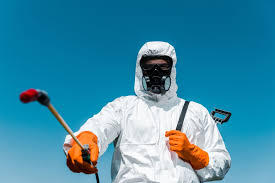
Chemical Pesticides: A Traditional Approach with Modern Innovations
Chemical pesticides have long been the backbone of pest control in agriculture, providing a potent means to combat a wide array of pests. Despite concerns over environmental impact and human health risks, the evolution of chemical pesticides has led to more sophisticated formulations that aim to minimize negative outcomes. Modern innovations have brought forward pesticides that are more specific to targeted pests, reducing the collateral damage to beneficial organisms. Advances in chemistry have also enabled the development of products with lower doses of active ingredients, enhancing safety and reducing ecological footprints. Biodegradable options are now more readily available, which decompose harmlessly in the environment. Additionally, the integration of technology has improved the application efficiency, ensuring that pesticides are distributed more uniformly and only where needed, thereby optimizing their effectiveness while mitigating adverse effects. This modern approach to chemical pesticides illustrates a shift towards more responsible and sustainable pest management strategies, acknowledging the critical role these products play in ensuring global food security.
The Rise of Biological Pest Control Products
Biological pest control products represent a paradigm shift in managing agricultural pests, focusing on leveraging natural predators, pathogens, and parasites to target and reduce pest populations. This method emphasizes the use of living organisms, such as beneficial insects, mites, nematodes, and microbial agents, to suppress pest outbreaks. For instance, ladybugs and lacewings are deployed to control aphid populations, while certain fungi and bacteria are utilized to combat root-eating grubs. The approach is rooted in the principle of integrated pest management (IPM), aiming to maintain pest numbers below damaging levels while minimizing the impact on non-target species, human health, and the environment. Biological control products are gaining traction due to their sustainability and the reduced likelihood of pests developing resistance, a common issue with chemical pesticides. Additionally, the advancements in biotechnology have facilitated the development and commercialization of highly specific biopesticides that target only the pest, leaving beneficial organisms unharmed. This rise in biological pest control products is a testament to agriculture's ongoing shift towards more ecologically balanced and sustainable pest management practices.

Technological Advancements in Pest Monitoring and Management
Organic and Eco-Friendly Pest Control Solutions
Navigating Regulatory Standards and Safety Concerns
Are there natural ways to control pests in farming?
2 notes
·
View notes
Text
#2010 - Fam. Macrochelidae - Phoretic Dung Beetle Mites
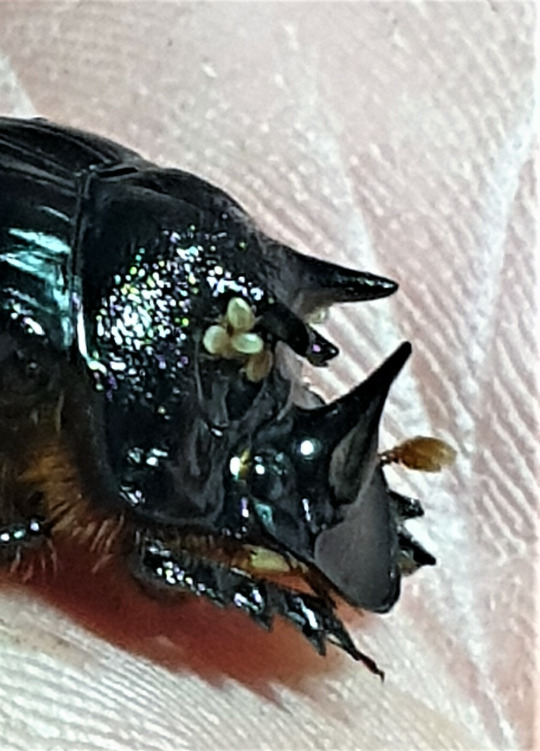
On the dung beetle Onthophagus ferox.
Macrochelidae are fast-moving, free-living cosmopolitan predators found in habitats that are rich in decaying organic material, including manure, and carrion, including human corpses. They're probably best known for the species that hitch a lift to the next cowpat on a convinient dung beetle, and then decimate the fly population at that pat. Macrochelids feed mainly on small arthropods such as fly larvae and nematodes, and some species are particularly promising as biological control agents.
For example, Macrocheles robustulus is presently commercially available for the control of pre-pupae and pupae of thrips as well as larvae of Lyprauta sp. (Keroplatidae).
3 notes
·
View notes
Text
Round 1 - Phylum Nematoda




(Sources - 1, 2, 3, 4)
Nematoda is a diverse phylum of animals commonly called roundworms or eelworms. Most are free-living and feed on microorganisms, but some are parasitic.
Nematodes are very diverse, but usually appear as small, slender worms. The smallest are microscopic, while the largest free-living species can be up to 5 cm (2 in) long. Some parasitic species can be even longer, reaching up to 8.4 m (27.5 ft) in length! Nematode heads are radially symmetrical and, in many cases, have head-shields radiating outwards around the mouth. The mouth has either three or six lips, which often bear a series of teeth on their inner edges. They have a dense, circular nerve ring which serves as their brain. They are covered in sensory bristles that provide a sense of touch. There are two small pits on the head that likely serve as chemoreceptors. Some aquatic nematodes have eye-spots, but it is unknown if they are actually sensory. They have seperate male and female individuals, with females usually being larger than males, though some species are hermaphroditic. They reproduce sexually, and females have a glandular uterus. They lay eggs, though some species are ovoviviparous. Larvae of free-living nematodes look like smaller adults, though parasitic nematodes usually have more complex life cycles.
Nematodes are perhaps the most successful phylum on Earth. They have adapted to nearly every ecosystem: from marine to freshwater, from soils to trees, from tundra to rainforest, at the tops of mountains, in deserts, in oceanic trenches, and up to 3.6 km (12,000 ft) below the surface of the Earth. They represent 90% of all animals on the ocean floor, and 80% of all individual animals on Earth. They often exceed a million individuals per square meter. This ubiquitous nature means they play a role in every ecosystem, most crucially in polar ecosystems where life is otherwise scarce. Of the parasitic forms, about a third of genera occur as parasites of vertebrates, and about 35 nematode species occur in humans.

Propaganda under the cut:
Nematodes play an important role in the decomposition process, aiding in recycling nutrients.
There are approximately 60 billion nematodes per human inhabiting the Earth’s topsoil. Those are your government assigned topsoil nematodes. Do with them as you wish.
One soil-living nematode, Caenorhabditis elegans (see first image), has had its entire genome sequenced, the developmental fate of every cell determined, and every neuron mapped. They are considered a model organism: a non-human species that is extensively studied to understand particular biological phenomena.
While some species of nematode are detrimental to agriculture, other species are considered beneficial as they prey on agricultural pests. These species are bred commercially as biological pest control agents which can be used as a much safer, environmentally-friendly alternative to pesticides.
The largest known nematode, Placentonema gigantissima, can reach sizes of up to 8.4 m (27.5 ft) long and 2.5 cm wide. It has been found living as a parasite in the reproductive tract of a sperm whale.
As stated by nematologist Nathan Cobb:
“In short, if all the matter in the universe except the nematodes were swept away, our world would still be dimly recognizable, and if, as disembodied spirits, we could then investigate it, we should find its mountains, hills, vales, rivers, lakes, and oceans represented by a film of nematodes. The location of towns would be decipherable since, for every massing of human beings, there would be a corresponding massing of certain nematodes. Trees would still stand in ghostly rows representing our streets and highways. The location of the various plants and animals would still be decipherable, and, had we sufficient knowledge, in many cases even their species could be determined by an examination of their erstwhile nematode parasites.”
38 notes
·
View notes
Text
Not all farm animals are cute and cuddly. Some of the most important animals on any farm can be slightly scary but have vital jobs farmers depend on.
When darkness falls across the farm, many think of cows, pigs, sheep, chickens and goats settling in the barn. But there is also a whole host of others —large and incredibly small animals going about their crucial roles to support the healthy functioning of our farms night and day. While many think of them only as creepy crawlies or predators of the night, the web of life is intricate. You might be astounded to learn more about these beneficial animals that help people and the crops we grow.
Take a farm’s soil, for example. Oozing with organisms—soil is the most biologically diverse part of the Earth. The soil on a farm includes thousands and thousands of beetles, springtails, mites, worms, spiders, ants, nematodes and other organisms. This multitude of soil organisms engineers pathways for rainwater, provides nutrients for plants and breaks down organic matter from previous crops.
These beneficial insects and soil creatures—and bigger predators that patrol the soil surface—provide checks and balances to the food web that makes farms fertile.
What may be most frightening is to imagine a world without these beasties fulfilling their roles on farms.
1. Earthworms
It’s hard to get the warm fuzzies for earthworms. They have no legs. They don’t have eyes or a face, and their bodies stretch like rubber. They secrete a slime—mucus—that helps them slide more easily through the soil. But these faceless fellows can be big friends to farmers.
Earthworms break up hard soil, create tunnels that allow air and water to penetrate better, and bring important minerals to the soil. Most of the 180+ species of earthworms in the U.S. bring great benefits to soil health on farms and can help improve fertilizer efficiency.
Indeed, some non-native species of earthworms can negatively affect the soils in some forests. But when it comes to farms, earthworms are friends.
2. Millipedes
Their name comes from Latin, meaning “thousand legs.” As it turns out, no known millipede species has a thousand legs. Most top out at several hundred. Although millipedes may look unpleasant, these arthropods (they are not insects) are harmless to humans and are, in fact, very beneficial to farm soils.
Millipedes shred the leftover residue of previous crops—organic matter—and mix it through the soil. This gives smaller soil organisms like fungi and bacteria a greater surface area to work on and speeds the breakdown of the crop residue, ultimately making the soil more fertile.
3. Ladybugs
Even people afraid of most insects usually aren’t creeped out by ladybugs. But for those with Coccinellidaephobia, a fear of ladybugs, walking through a garden or farm can be terrifying. It makes sense—in nature, red and black is often a sign to stay away. However, these diminutive flying beetles bring huge benefits to farmers and gardeners. Ladybugs are so prized by gardeners and farmers that you can buy them from suppliers!
Why? They’re nature’s perfect pest control. Ladybugs (also known as lady beetles and ladybird beetles) gobble up crop-destroying aphids, one of the most problematic insect pests for farms and gardens. A single ladybug can consume 50-60 aphids daily and thousands over a lifetime. One ladybug can lay hundreds of eggs in a season, and its larvae will eat hundreds of aphids before becoming adults. In addition, ladybugs feed on mites, scales, mealy bugs, thrips and white flies, all of which damage crops.
Another sign of how highly ladybugs are esteemed: they are the official state insect of Delaware, Massachusetts, New Hampshire, North Dakota, Ohio and Tennessee.
4. Pollinators
As many schoolchildren can tell you, plants need pollinators. Why? A quick refresher: pollen from a plant's male anther needs to be transferred to the female stigma for a plant to reproduce via seeds.
About 87% of flowering plants rely on pollination, and more than 150 food crops in the U.S. That's where pollinators come in. They make the crucial exchange of pollen.
Several species of animals help with pollination, including hummingbirds, butterflies, moths, even flies and wasps. But bees do the heavy lifting, transferring far more pollen than other animals. Although European honeybees and bumblebees are the best-known U.S. bee varieties, our nation harbors more than 4,000 species of bees!
Protecting undeveloped pollinators' habitats, such as wildflower meadows on the edges of farmland, is vital to protect these industrious, fruitful creatures.
5. Spiders
What is it about spiders that unnerves people? Is it their sticky, often hard-to-spot webs, or the way they pounce so quickly when prey is near? Something about spiders unsettles most people. Yet spiders are incredibly beneficial to us.
“If spiders disappeared, we would face famine,” Norman Platnick of New York’s American Museum of Natural History told the Washington Post. “Spiders are primary controllers of insects. Without spiders, all of our crops would be consumed by those pests.”
A study found that more than 600 species of spiders patrol U.S. croplands, keeping crop-eating pests under control.
6. Coyotes
Though they have a reputation as a pest animal and a nuisance, coyotes are, in fact, a species that can bring benefits to farms.
Coyotes are skilled predators, keeping populations of rodents that can destroy crops—such as rabbits, squirrels, gophers, voles and mice in check. Removing coyotes from an area can cause rodent populations to explode.
While it’s true that coyotes are omnivorous and will sometimes eat fruit, berries and vegetables, 90% of their diet comes from meat. They do not pose a threat to farmers’ crops.
Related to dogs and wolves, coyotes have found a way to coexist with humans and expand their range. Formerly inhabiting the western portion of the U.S., coyotes can now be found in every state except Hawaii and have moved south, far into Central America.
Ranchers sometimes may have a legitimate gripe with coyotes because, in packs, they are capable of attacking and killing livestock. The common solution: good fencing plus the coyote’s cousin, a livestock guard dog or two patrolling the territory.
7. Snakes
Snakes get a bad rap. Many people seem to have an almost visceral aversion to the sinuous reptiles. But snakes are generally shy creatures that avoid human contact.
There are about 50 species of snakes in the U.S., and 20 of those are venomous—but even they shy away from human contact. While snakes are sneaking about our fields and avoiding us, they are preying on gophers, field mice, rats, rabbits and other rodents that damage crops by feeding on them or burrowing into their roots.
8. Skunks
Anyone whose dog has ever been sprayed by a skunk knows: it’s Grade A horrible. No one wants to be anywhere near a skunk. We fear skunks with good reason. But these slow-moving, stinky beasts can bring benefits to farms.
Skunks consume pest insects like caterpillars and grubs, field mice and voles, helping to keep them under control. They also eat berries, leaves and grasses. Beekeepers do not like skunks, however. Because of their thick fur, skunks aren’t deterred by bee stings and will seek out honeybee hives to dine on.
9. Bats
These winged mammals are the poster child for Halloween and have been associated with all things scary at least as far back as Bram Stoker’s classic horror novel Dracula, published in 1897.
Some people fear that, like Dracula, bats will drink their blood. But none of the 40 bat species inhabiting the U.S. drink blood. Three species are nectar feeders that help pollinate desert plants, while most U.S. bats eat insects in abundance. A single insect-eating bat can consume hundreds of pest insects in a night, equivalent to half its body weight. A cave full of thousands of bats can consume literal tons of insects.
Economists have quantified the dollar value of bats’ insect pest control to U.S. agriculture at $23 billion annually.
10. Owls
The banshee screech of an owl can sound supernatural in the pitch blackness of night on a farm, but owls are super-carnivores that benefit farmers significantly.
Owls serve an important role in controlling rodent populations and protecting crops. They are a natural pest defense system as they are highly skilled hunters of the night when rodents and other small mammals are on the move.
With their ghostly night stalking enabled by their giant wingspan, it's no wonder owls are effective carnivores. Owls can eat up to 10% of their body weight in rodents each night. Because hunting is what they do best, they have also been known to prey on snakes, amphibians and invertebrates.
2 notes
·
View notes
Text
Bionematicides Market Drivers Include Sustainable Agriculture Demand, Regulatory Support, and Eco-Friendly Pest Control
The bionematicides market is witnessing a steady surge as agriculture moves toward more sustainable and environmentally responsible practices. Bionematicides, derived from natural organisms like bacteria, fungi, and plant extracts, are used to control harmful nematodes that damage crops. Unlike chemical nematicides, these bio-based solutions are considered safe for crops, soil health, and the broader ecosystem. Several key drivers are contributing to the rising adoption and growth of bionematicides in the global market.
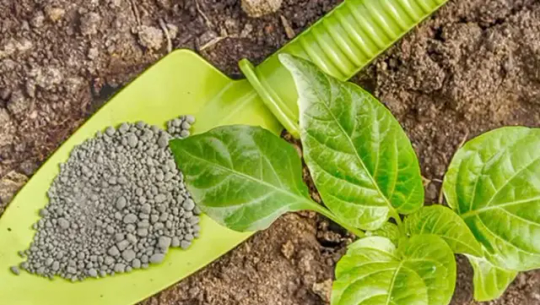
One of the primary drivers is the rising demand for sustainable agricultural solutions. With increasing concerns over soil degradation, water contamination, and chemical pesticide residues, farmers and agribusinesses are looking for safer alternatives. Bionematicides offer a biological approach to pest control that aligns with the principles of sustainable farming. Their ability to suppress nematodes without harming beneficial organisms helps improve soil fertility and supports long-term productivity. As awareness of sustainable practices grows among producers and consumers, demand for biological crop protection solutions is accelerating.
Government regulations and policy support are also playing a crucial role in driving the market. Regulatory bodies in several regions are imposing strict limits on the use of synthetic nematicides due to their environmental and health hazards. In contrast, bio-based products are being fast-tracked for approval and encouraged through subsidies and incentives. This regulatory push is compelling farmers to transition toward bionematicides, especially in developed agricultural economies where compliance with environmental standards is mandatory. Such support not only reduces barriers to entry for new players but also fosters innovation and development in the sector.
The market is further driven by the growing adoption of integrated pest management (IPM) strategies. IPM combines different pest control methods to minimize economic damage while reducing reliance on chemical inputs. Bionematicides fit well into this model, providing targeted action against nematodes with minimal ecological disruption. Their compatibility with other biological and mechanical control methods makes them a preferred choice for integrated farming systems. As IPM becomes more widely adopted, the demand for bionematicides is expected to rise significantly.
Another major driver is the increase in crop losses due to nematode infestation. Nematodes are among the most destructive plant parasites, affecting a wide range of crops such as tomatoes, potatoes, soybeans, and bananas. Their microscopic size makes them hard to detect until significant damage has occurred. As awareness of their economic impact grows, farmers are actively seeking effective prevention and control solutions. Bionematicides provide a proactive, environmentally safe method for managing nematode populations and minimizing crop losses, thereby contributing to food security and profitability.
Consumer preference for chemical-free produce is also influencing market dynamics. With rising health consciousness and demand for organic products, consumers are pressuring growers to reduce or eliminate synthetic chemical use. Bionematicides offer a compliant solution for organic and residue-free farming, allowing producers to meet certification requirements and consumer expectations. This shift in consumer behavior is motivating more growers to incorporate biological inputs into their crop protection regimes.
The advancement in microbial research and biotechnology is another key market driver. Scientific progress has made it possible to identify and harness new strains of microorganisms that are highly effective against specific nematode species. Improved formulations, better shelf life, and more efficient delivery systems are making bionematicides more practical and reliable for commercial use. These innovations are not only enhancing product performance but also expanding the range of crops and geographies where bionematicides can be applied.
Additionally, climate change and the degradation of natural resources are encouraging the move toward environmentally friendly pest control. Rising temperatures, shifting pest populations, and erratic weather patterns are increasing the vulnerability of crops to pest outbreaks, including nematodes. In such conditions, bionematicides offer a sustainable and adaptable solution that supports resilient farming systems. Their non-toxic, biodegradable nature makes them suitable for long-term soil health, which is critical in combating the effects of climate stress.
Partnerships and investments in agricultural biotechnology are also fueling the market. Leading agritech companies are collaborating with research institutions and startups to develop next-generation bionematicide products. Venture capital investment in biological crop protection is growing, bringing in funding for product development, field trials, and market expansion. These collaborations are accelerating innovation and improving the commercial viability of bionematicide solutions.
In conclusion, the bionematicides market is being shaped by a strong combination of environmental, economic, and technological drivers. As the world seeks safer, more sustainable farming practices, bionematicides offer a compelling alternative to conventional chemical controls. With regulatory backing, consumer support, and ongoing innovation, the market is well-positioned for robust growth in the coming years. Farmers, policymakers, and agribusinesses alike are recognizing the value of bionematicides in building a healthier, more resilient agricultural future.
#BionematicidesMarket#SustainableFarming#BiologicalPestControl#EcoFriendlyAgriculture#OrganicFarmingSolutions
0 notes
Text
Eco-Friendly Pest Control Services in Nairobi

Nairobi's urban environment presents unique challenges in pest management. From residential apartments to commercial establishments, property owners are increasingly seeking sustainable solutions that protect both their spaces and the environment. The growing demand for Pest Control Services in Nairobi has led to innovative approaches that prioritize ecological safety without compromising effectiveness.
Why Choose Eco-Friendly Pest Control?
Traditional pest control methods often rely heavily on synthetic chemicals that can harm beneficial insects, contaminate water sources, and pose health risks to families and pets. Eco-friendly alternatives utilize natural ingredients, biological controls, and integrated pest management strategies that target specific pests while preserving the balance of the ecosystem.
Green pest control methods include botanical extracts, essential oils, diatomaceous earth, and beneficial predator insects. These solutions effectively eliminate common Nairobi pests such as cockroaches, ants, termites, rodents, and flies while maintaining environmental integrity.
Sustainable Solutions for Common Nairobi Pests
Professional Pest Control Services in Nairobi now offer comprehensive, eco-friendly treatments tailored to the city's specific pest challenges. Termite control utilizes borate-based treatments and beneficial nematodes instead of harsh soil fumigants. Ant management employs food-grade diatomaceous earth and natural repellent barriers. Cockroach elimination focuses on gel baits with low environmental impact and strategic habitat modification.
For rodent control, exclusion methods combined with humane trapping systems provide long-lasting results without secondary poisoning risks. Mosquito management incorporates biological larvicides and habitat modification to reduce breeding sites naturally.
Long-term Benefits and Cost Effectiveness
Investing in environmentally conscious Pest Control Services in Nairobi provides lasting value beyond immediate pest elimination. These methods build sustainable pest resistance, reduce the likelihood of pest resurgence, and protect beneficial organisms that naturally control pest populations.
Moreover, eco-friendly treatments often prove more cost-effective over time, as they address root causes rather than providing temporary fixes. Property owners experience fewer recurring infestations and reduced health-related expenses.
Professional Expertise Matters
Effective eco-friendly pest control requires specialized knowledge of pest biology, environmental science, and sustainable treatment applications. Professional services ensure proper identification, targeted treatment, and ongoing monitoring to maintain pest-free environments while protecting Nairobi's urban ecosystem.
Choose green pest control solutions that safeguard your property, family, and the environment for a healthier, more sustainable future in Nairobi.
#pest control in Nairobi#Pest control service in Nairobi#Pest control company in Nairobi#Fumigation in Nairobi#Fumigation Services in Nairobi
0 notes
Text
Protecting Your Crops: Essential Tips for Disease Management
In the realm of crop production, ensuring the health and vitality of your plants is paramount. Disease management plays a critical role in safeguarding crops from potential threats that can drastically reduce yield and quality. Utilizing tools like weed killers, pre-emergent treatments, and broad-spectrum herbicides are essential components of an integrated disease management strategy. Broadleaf herbicides and broad leaf pre-emergents are particularly effective in controlling unwanted vegetation that can harbor diseases.

Understanding Crop Diseases
Common Types of Crop Diseases
Numerous pathogens, including bacteria, viruses, nematodes, and fungi, can cause crop illnesses. Some of the most common crop diseases include:
Fungal Diseases: Powdery mildew, downy mildew, and rusts.
Bacterial Diseases: Bacterial blight, wilt, and soft rot.
Yellowing virus, mosaic virus, and leaf curl virus are examples of viral diseases
Nematode Infestations: Root-knot nematodes and cyst nematodes.
Importance of Early Detection
Early detection of crop diseases is crucial. Regular monitoring and scouting of fields can help identify symptoms early, allowing for timely intervention and minimizing damage. Look for signs such as discolored leaves, wilting, stunted growth, and unusual spots or lesions on plants.
Preventative Measures for Disease Management
1. Crop Rotation
Crop rotation is the practice of switching up the crops cultivated in a certain land from one season to the next. This procedure aids in interrupting the life cycle of pests and diseases that might be unique to a given crop. For example, rotating legumes with cereals can reduce the buildup of soil-borne diseases
2. Resistant Varieties
Planting disease-resistant crop varieties is an effective way to minimize the risk of disease outbreaks. These cultivars have an inherent defense mechanism since they are engineered to resist particular infections. Speak with your local agricultural extension services to determine which resistant types are appropriate for your area.
3. Suitable Plant Distance
Plants spaced appropriately allow for optimal air circulation, which lowers humidity levels that encourage the growth of fungi. Proper spacing also makes it easier to inspect and treat plants for any signs of disease.
Effective Control Techniques
1. Use of Herbicides
Pre-Emergent Herbicides
Before weed seeds germinate, pre-emergent herbicides are sprayed onto the soil.. These herbicides form a chemical barrier that inhibits weed growth, reducing competition for resources and minimizing the spread of diseases. They are particularly effective in controlling annual weeds that can harbor pathogens.
Broad-Spectrum Herbicides
Broad-spectrum herbicides target a wide range of weeds and are useful in managing both grasses and broadleaf weeds. By eliminating these potential hosts, broad-spectrum herbicides help reduce the reservoir of pathogens in the field. The manufacturer's instructions should always be followed for safe and efficient use.
2. Chemical and Organic Fungicides
Fungicides are critical tools in disease management, particularly for fungal diseases. Both chemical and organic options are available:
Chemical Fungicides:
These are synthetic fungicides that provide quick and effective control of fungal pathogens. Examples include chlorothalonil and propiconazole. They are often used as a preventative measure or at the first sign of disease.
Organic Fungicides:
These fungicides, such as copper-based solutions and neem oil, are derived from natural sources. They are suitable for organic farming and are less harmful to beneficial insects and the environment.
3. Integrated Pest Management (IPM)
Integrated Pest Management (IPM) is a holistic approach that combines various techniques to manage pests and diseases sustainably.
Key components of IPM include Biological Control: Utilizing natural predators or parasites to control pest populations.
Cultural Practices: Implementing crop rotation, resistant varieties, and proper sanitation.
Mechanical Control: Physical removal of infected plants and debris.
Chemical Control: Judicious use of pesticides and herbicides when necessary.
Tips for Weed Killer Pre-Emergent:
When using weed killer pre-emergent timing is crucial. Apply the product before weed seeds germinate, typically in early spring or fall. Ensure the soil is moist before application to activate the herbicide. Use a calibrated sprayer for even coverage and avoid disturbing the soil after application, as this can break the chemical barrier. Choose a pre-emergent herbicide that targets the specific weeds common in your area and is safe for your crop. Always follow the label instructions for application rates and safety precautions.
Case Study:
Successful Disease Management in Tomato Cultivation
In a recent case study, a tomato farm faced significant challenges with early blight, a common fungal disease. By implementing an IPM approach, the farm achieved remarkable results
Crop Rotation:
The farm rotated tomatoes with legumes, reducing the buildup of blight spores in the soil.
Resistant Varieties: Blight-resistant tomato cultivars were planted, which helped to lower the disease's occurrence.
By implementing these strategies, including the judicious use of broadleaf herbicides and broad-leaf pre-emergents, farmers can significantly reduce the impact of diseases on their crops, leading to healthier plants and improved yields
0 notes
Text
Chemical vs. Non-Chemical Termite Treatments: Pros and Cons
When it comes to treating termites, homeowners are usually faced with two choices: chemical and non-chemical treatments. But which one should you choose? Let’s explore both options, their pros and cons, and how to make the right decision for your home.
What Are Chemical Termite Treatments?
Chemical treatments involve the use of termiticides — chemical substances designed to kill termites or deter them from attacking wooden structures.
Common Methods:
Soil Treatment: Applying chemical barriers around the foundation.
Wood Treatment: Spraying or injecting wood with termiticides.
Baiting Systems: Placing chemical-laced baits to attract and kill colonies.
Pros of Chemical Treatments:
Quick Results: Chemical solutions offer fast and visible effects.
Long-Lasting Protection: Many treatments offer protection for 5–10 years.
Widespread Use: Trusted by professionals and proven effective globally.
Great for Severe Infestations: If termites have already entered your walls or foundation, chemicals may be your best shot.
Cons of Chemical Treatments:
Environmental Concerns: Some termiticides can affect soil, water, and non-target organisms.
Health Risks: Poorly administered chemicals can be harmful to pets, children, and people with respiratory issues.
Professional Help Needed: DIY chemical treatments are risky and often ineffective — it’s always better to call certified experts like AJL Pest Control Hyderabad.
What Are Non-Chemical Termite Treatments?
Non-chemical treatments focus on natural, physical, or biological ways to repel or eliminate termites — often used as part of Integrated Pest Management (IPM).
Common Methods:
Boric Acid & Natural Oils: Natural deterrents that disrupt termite digestion.
Nematodes: Microscopic worms that feed on termites.
Sand or Steel Barriers: Physical layers that prevent termites from entering.
Heat & Cold Treatments: Exposing termites to extreme temperatures.
Pros of Non-Chemical Treatments:
Eco-Friendly: Safe for the environment, pets, and family.
No Toxic Residue: You can stay at home during or after treatment.
Good for Prevention: Ideal for people building a new home or in early infestation stages.
Sustainable Choice: Helps reduce dependence on synthetic chemicals.
Cons of Non-Chemical Treatments:
Slower Results: May take longer to show noticeable reduction.
Not Always Effective for Large Infestations: Chemical backup may still be required.
Requires Ongoing Monitoring: Unlike one-time chemical barriers, these need routine checks.
Limited Availability: Not all providers in Hyderabad are experienced in advanced eco-friendly termite solutions — but AJL Pest Control is.
Hyderabad’s Termite Challenge
If you're a homeowner or property manager in Hyderabad, you've probably heard stories — or experienced firsthand — how termites can weaken wooden doors, furniture, or even concrete structures. Areas like Gachibowli, Miyapur, Uppal, and Secunderabad are particularly vulnerable due to expanding construction and garden surroundings.
Hyderabad's warm climate and monsoon humidity create a perfect environment for subterranean termites, the most destructive type. That’s why professional termite control in Hyderabad is not a luxury — it’s a necessity.
Which One Should You Choose?
Choose Chemical Treatments If:
You have an active infestation inside walls or flooring.
You need immediate relief.
You're looking for long-term protection with minimal maintenance.
Choose Non-Chemical Treatments If:
You prefer eco-friendly solutions and have mild termite activity.
You’re building a new home and want pre-construction protection.
You’re maintaining a garden, nursery, or organic zone where chemical use is discouraged.
How AJL Pest Control Services Can Help
At AJL Pest Control, we don’t believe in one-size-fits-all solutions. We provide:
Customized treatment plans (chemical, non-chemical, or hybrid)
Advanced equipment and safe chemicals
Expert technicians trained in termite biology
Affordable AMC packages for long-term peace of mind
Whether you're looking for eco-friendly termite control in Hyderabad or want the best pest control services near you, AJL Pest Control is your trusted partner.
Call Now: +91 9703311339 for a free termite inspection at your home or office.
Final Thoughts
Both chemical and non-chemical termite treatments have their advantages — and your decision should depend on the extent of the infestation, your environmental priorities, and your budget. The most important part is to act quickly before the damage gets worse.
Living in Hyderabad means enjoying great food and culture — but it also means protecting your property from sneaky invaders like termites. Don’t wait for the damage to become visible. Get your home inspected by AJL Pest Control, a name trusted for providing the best termite treatment in Hyderabad.
#pest control services#pest control#pest control hyderabad#ajlpestcontrolservices#hyderabad pest control services#pest control hyderabad service#pest control services in hyderabad#termite control#termite treatment#termite service#termite inspection#termiteproof#termites#hyderabad
0 notes